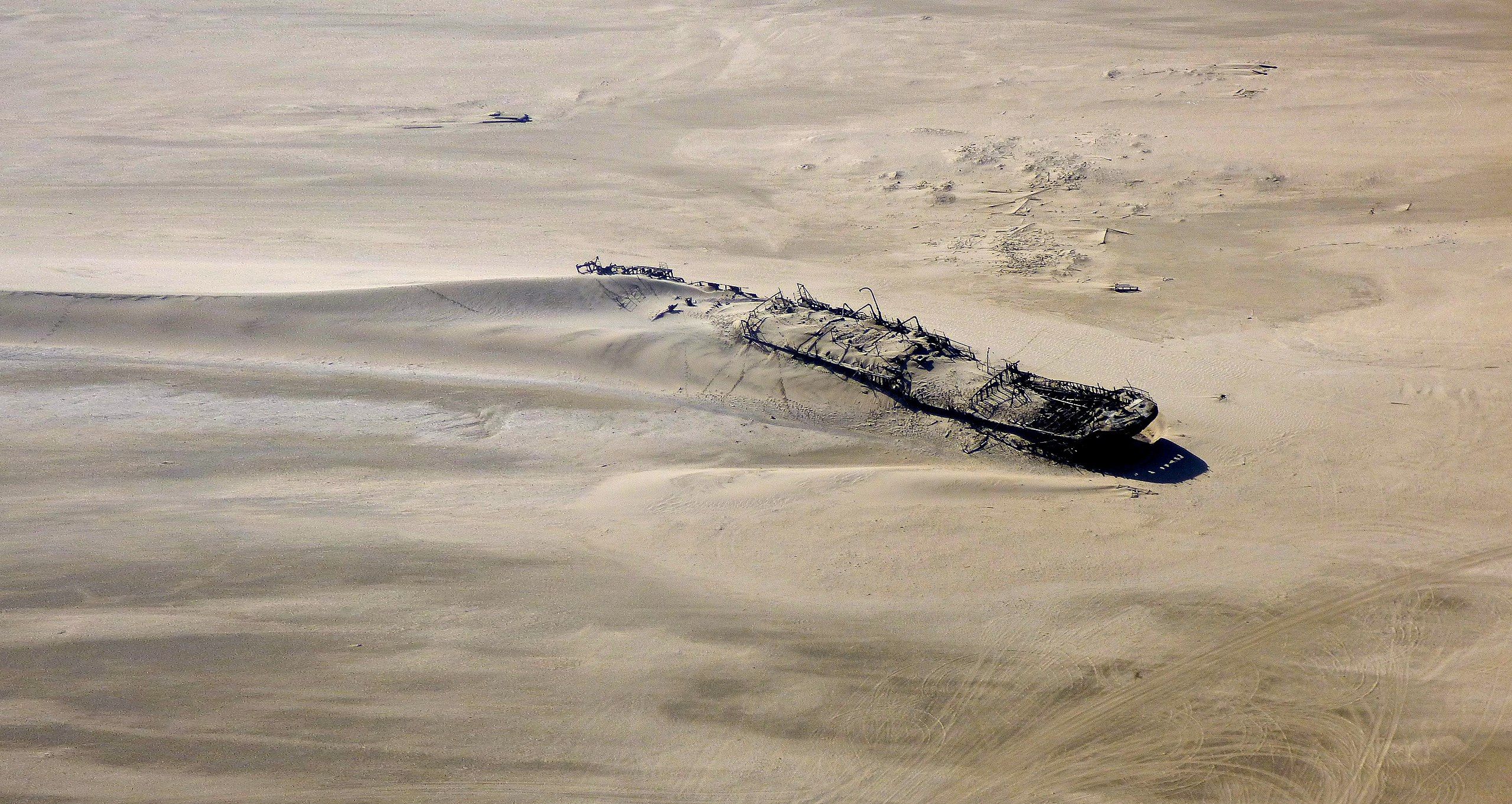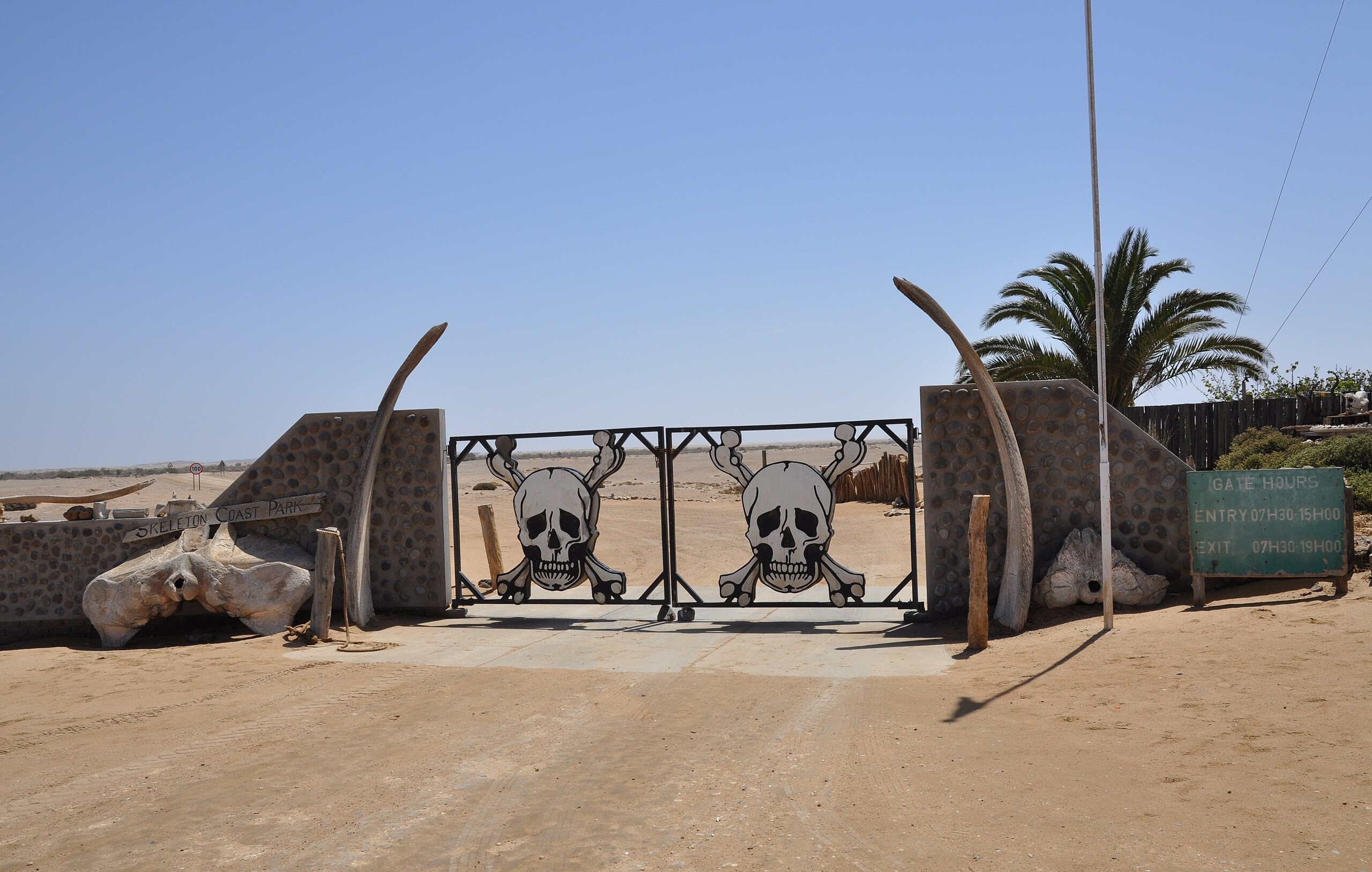There have been many names given to the region of the Atlantic coast that stretches between the Kunene and Swakop rivers in Namibia, and none of them are reassuring. To the local San people, it’s known as the “land God made in anger”; to the Portuguese sailors who briefly stopped there in 1486, it was the “Gates of Hell”.
But to most people today, it’s known as the Skeleton Coast. And there’s a good reason why.
Bones in the sand
The Skeleton Coast is named for what it is: “a huge animal graveyard,” CNN travel writer and journalist Karen Bowerman recalled in 2013, describing “seal skulls jumbled with turtles’ rib cages and the colossal, bleached vertebrae of whales.”
While you might be tempted to think these were the victims of the lions and hyenas you will likely see wandering the sands, most of them died at the hands of a much more deadly species: humans, employed in the once-booming whaling industry. Don’t feel too bad, though – the coast has taken its revenge, in the form of hundreds of shipwrecks that dot the 500 kilometers (311 miles) of shoreline.
“Some of them are found behind dunes, far onshore from the sea,” Jan Friede, a former ranger at Skeleton Coast National Park who photographed and documented 112 wrecks during his six-year tenure there, told CNN in 2018.
“Even if you survived the wreck you were probably doomed,” Friede said. “You struggle ashore, overjoyed that you’ve been saved, and then realize that you landed in a desert and probably should have gone down with the ship.”

The Eduard Bohlen, a ship that was wrecked on the Skeleton Coast on September 5, 1909.
Some of these ship carcasses date from hundreds of years ago; some are barely more than a decade old. But of all of the nearly 1,000 wrecks that have run aground over the centuries, few are as infamous as the tale of the Dunedin Star – a British cargo liner that fell foul of the coast back in 1942, and whose rescue has gone down as one of the most notable examples of Murphy’s law in history.
“Built in Birkenhead, England, [the Dunedin Star] had an illustrious career in the Second World War, surviving multiple Italian aerial attacks as part of a convoy relieving the siege of Malta. The Skeleton Coast was to be its undoing,” wrote renowned travel author Oliver Smith in his Atlas of Abandoned Places.
“Carrying munitions to Egypt in 1942, it hit a reef close to the present-day border with Angola,” he explained. “Rapidly taking on water, 63 on board were evacuated to the beach, as rescue ships rallied from afar. In the ensuing drama, one rescue ship itself ran aground, and a plane that had hoped to land nearby crash-landed in a salt flat.”
Thanks to air-dropped supplies, almost everyone survived. Other shipwrecks were far less lucky. “[One] unknown vessel washed up in 1860,” author and journalist Tahir Shah wrote in a 2011 BBC Travel article. “The 12 headless skeletons were found 70 years ago, along with a slate buried in the sand. It read: ‘I am proceeding to a river 60 miles north, and should anyone find this and follow me, God will help him.’ The writer’s remains have never been found.”
Life finds a way
Despite all this desolation, the Skeleton Coast is teeming with life. Visitors to the shore can, if they’re lucky, see some of the Namib desert’s unique variations on iconic African wildlife: desert lions in high-tech collars, who prowl the beach looking for a tasty seafood snack; ostrich and springbok; even populations of elephants, adapted over generations to life in the harsh Namib desert.
“Seeing the elusive desert lions is a rare and unique experience,” Wessel Landman, from the Hoanib Skeleton Coast Camp, told CNN in 2018. “And while seeing them can never be guaranteed, they have been known to visit the waterhole near the camp, and have even been seen relaxing on our walkways.”
“The opportunity to see them, whether in the vicinity of the camp, or further afield in the dunes or on the beach, is an extraordinary privilege,” he added.

[Lion voice] yum yum.
Image credit: LouieLea/Shutterstock.com
The seas, too, are flourishing. Whales, once hunted to near-extinction, are fast becoming a mainstay of the Namibian coast; the Cape Cross Seal Reserve, meanwhile, is “home to over 200,000 foul-smelling fur seals,” wrote documentarian Genna Martin in the New York Times in 2022. The coast is reputedly one of the best places in the world for fishing – and surprisingly popular for enthusiasts of a rather different sport, too.
“It’s kind of a surfer’s dream,” pro surfer Max Elkington said of the waters off the Skeleton Coast in 2023.
“[It] is such an unbelievable place. You kind of have to go there to understand what the wave is like, you know,” he said. “It’s just so long, and you’re surrounded by nothing. You’re in the middle of nowhere, desert, sand dunes, jackals, just so wild up there.”
Diamonds in the desert
Today, the Skeleton Coast is virtually uninhabited; accessible only by the most hardy vehicles and guarded by a skull and crossbones. And yet, it wasn’t so long ago that it was home not just to larger settlements, but to veritable boom towns.
Just like the ships that washed up on the beach, you can still see the wrecks of the houses, restaurants, casinos, and hospitals that once populated places like Kolmanskop, a German colony established a century ago and eventually abandoned in the 1950s. And why? Because, Shah explained, “Namibia is a land of diamonds like no other.”
Kolmanskop was a mining town, but it barely needed to be: diamonds on the Skeleton Coast quite literally get washed up by the sea like seashells. It’s the final step in a story that began hundreds of millions of years ago. “As far as geologists can determine, beginning sometime during the Jurassic Age, the diamonds that wash up in Namibia were pushed to the surface by Kimberlite Pipes about 800 kilometers [497 miles] to the east, along what’s now the Orange River,” explained Peter Fuhrman in a 2016 Fortune article.
“The biggest, heaviest diamonds were gradually pulled down the river by currents and then eventually far out into the sea in Namibian coastal waters,” he continued. “The tides are now slowly but surely pushing them back on land.”

We weren’t kidding about the skulls and crossbones.
Diamonds can still be found on the Namibian shorelines – but these days, the Skeleton Coast isn’t where you should look. Unfortunately, the place to go – about 750 kilometers (466 miles) southeast, on the country’s border with South Africa – is known as the Sperrgebiet, or “Forbidden Area”. Guarded not by government forces, or even by the forces of nature itself, but by the De Beers Diamond Consortium, entering without permission is akin to breaking into a maximum-security prison, Fuhrman recalled.
Luckily, there’s enough natural treasure in the Skeleton Coast for us mere mortals – and if you want diamonds, all you have to do is look up.
“Light pollution is almost non-existent on the Skeleton Coast,” noted a 2016 CNN article on the region. “The area is a stargazer’s paradise.”
“The Milky Way is able to put on a majestic display against the black backdrop, and the galaxy bursts bright and brilliant in the night sky,” it reported. “If you’ve got a telescope, pack it – you might even be able to see the Tarantula Nebula, a spidery cloud of dust and gas, and one of the Milky Way’s biggest star factories.”
Source Link: Namibia's Spooky "Skeleton Coast" Is Home To Lions, Diamonds, And Hundreds Of Shipwrecks